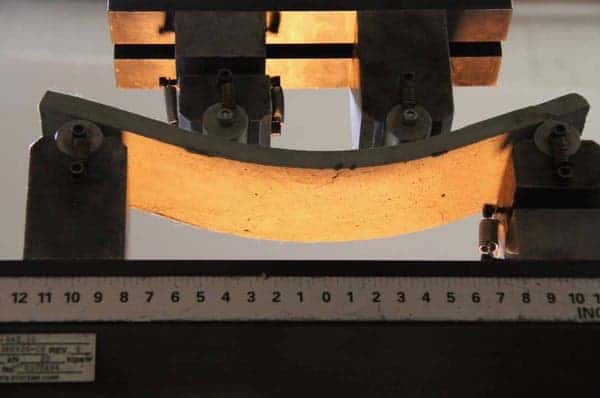
Concrete is quite literally the foundation of our modern infrastructure — but it comes at a cost. The concrete industry is one of the most environmentally damaging in the world, accounting for 9% of total global CO2 emissions in 2018. Naturally, scientists are exploring other alternatives in order to offset this huge carbon footprint. One such project from the University of Michigan dramatically lowers CO2 emissions by actually injecting the greenhouse gas into the concrete, converting it into a useful mineral. The resulting concrete is also bendable, leading to less brittle structures that require fewer materials, thereby further reducing emissions.
The formula for concrete is very simple. You only have to mix aggregates — rocks and sand — along with cement and water in the proper amount. Recipes will vary depending on the type of structure (i.e. bridges versus buildings), but that’s about it.
Nearly 80% of concrete’s carbon emissions come from cement, which accounts for about 8% of the world’s carbon dioxide (CO2) emissions. If the cement industry were a country, it would be the third-largest emitter in the world — not far behind China and the US. It contributes more CO2 than aviation fuel (2.5%) and is not far behind the global agriculture business (12%).
This explains why cement is the first thing that scientists seek to optimize for lowering emissions. One approach involves using less cement in the concrete, replacing some of it with coal fly ash and iron slag. Some of the most promising results come from mixing limestone calcined clay with the aggregates, which can reduce emissions by at least 20%.
But the researchers at the University of Michigan have something even more radical in mind. Their aim is to cut the built environment’s carbon footprint in half and boost its productivity by 2030. One project in this direction is a novel composite that is engineered to react with CO2 and form minerals so that the greenhouse gas can be stored in the concrete rather than become a byproduct. What’s more, the resulting concrete seems to have a number of appealing properties.
Lab experiments showed that CO2 curing significantly improves the concrete’s strength and durability, though results can vary depending on the concrete mixes and procedures. Perhaps the most interesting property is that the resulting concrete is more bendable, allowing thinner and less brittle structures to be constructed. This would lower the requirements for reinforced steel, further reducing the carbon footprint of a construction project.
Bendable concrete is also appealing due to its enhanced earthquake resistance. The 61-story Kitahama building, the tallest residential tower in Japan, was built using bendable concrete, for instance.
These developments are important in the context of crumbling federally-managed infrastructure, as well as the COVID-19 crisis. The American Society of Civil Engineers estimates the US needs to spend some $4.5 trillion by 2025 to fix the country’s roads, bridges, dams, and other infrastructure.
Clearly, United States’ infrastructure is badly in need of an overhaul, and the economic fallout due to the pandemic may prove to be the perfect opportunity. Historically, recessions have been managed by investments in massive infrastructure projects that create a lot of jobs across multiple industries. If the Biden administration is up for this ambitious task, managing concrete emissions will prove essential in order to preserve its other objective, mitigating climate change.









